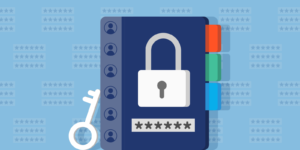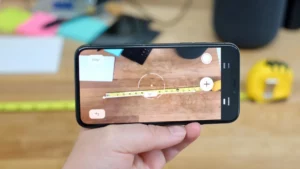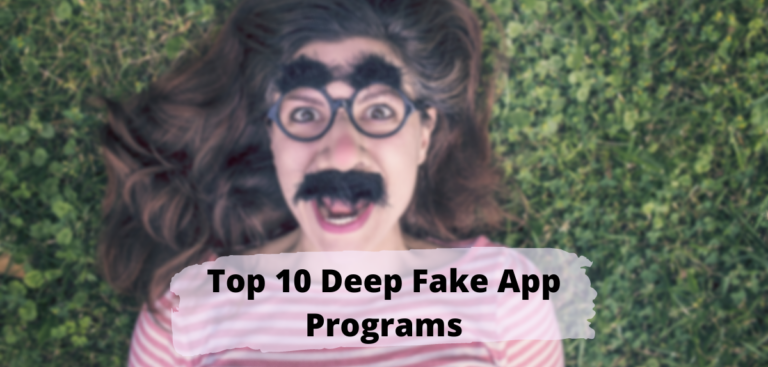One of China’s most popular deep fake app in China, dubbed Zao, has taken the internet by storm this year. Fast and easy deepfake filmmaking is possible because of this tool. However, even though the app is meant for entertainment purposes only, the usage of deepfake videos in politics can be incredibly harmful. Our selection of deep fake app and websites is limited to those generally safe to use for research purposes. Machine learning and picture identification are just some things you may do with these services. That being said, let’s go through the rest of the options quickly.
We must use deepfakes responsibly, even if deep fake technology is not yet capable of tricking people completely. If you’re going to employ deepfake technology for illegal objectives, make sure you have permission first.
Best Deep fake App and Websites in 2023
These ten deep fake app and services have been chosen for their fun factor, privacy concerns, and potential for research purposes. You can quickly select the best deepfake software based on your preferences. Next, let’s begin our shopping list.
1. Zao
Because of its ability to create deepfake films in seconds, Zao has become the latest program to become viral in China. Video clips from popular Chinese dramas, TV shows like The Big Bang Theory, and Hollywood blockbusters are all available in the library. In seconds, Zao makes a deepfake video that appears to be a replica of the original. Compared to sophisticated computers, which can take hours to train the Generative Adversarial Network responsible for creating deep fake videos, the software only takes seconds.
It is presently only available in China for Android and iOS users to use the Zao app. You can sideload Zao on Android, but it won’t work because you need a Chinese phone number to sign up. But we were able to test the app in India and found that it worked in the vast majority of circumstances. We found that it didn’t look as natural on Indian faces as one may expect throughout our testing. This could be since Zao was mostly trained using Chinese-language facial images. Although Zao is a fascinating piece of software, you may want to give it a whirl when it becomes widely available.
As an aside, the Zao app’s business has previously declared in its user agreement that it has the right to use any images taken on the app. The controversial passage was later retracted in response to significant criticism. However, you should avoid using the app if you are concerned about privacy.
2. Deepfakes web β
Deepfakes web is a web service that allows you to create and post deepfake films. Deep learning is used to decipher the complexities of facial data. As much as four hours of training and learning from video and photographs are required to master Deepfakes online, an additional 30 minutes is required to swap the faces using the taught model.
Even though a powerful cloud GPU is used, rendering all the data can take hours. Zao’s ability to create a deepfake video in seconds is truly game-changing, as demonstrated by this video. There is no harm in trying out a deepfake video for computer vision research on the Deepfakes site.
3. Wombo
This isn’t the first time you’ve heard about Wombo; you haven’t either. Anyone who has never used Wombo will be able to see it as a lip-syncing tool that morphs you or someone else into a singing face. With just a single shot, you may have the character sing any one of fifteen songs. This app has overtaken Reels and TikTok in popularity around the world.
4. Reface
A deepfake GIF meme generator called Doublicat was featured in one of our previous articles, and now it’s making a comeback. Reface AI-inspired the program’s new moniker, which was given to it by Doublicat’s creators as a tribute. Reface AI uses a Generative Adversarial Network (GAN) as its backbone (GAN). Take a photo and then choose a gif from the app’s library to get started.
In seconds, the computer will place your face over the gif. As a result, your face superimposition may be off due to the symmetry of your face or the gif you’re utilizing. On the other hand, there is no shortage of options with all the gifs available online. You may use this program to create your gifs and wow your friends.
5. MyHeritage
This program, MyHeritage, is yet another viral deep fake app. Software that lets you manipulate vintage photos has gained a following among social media users because of its Deep Nostalgia feature. Upload a photo and click the animate button to get started.
An animated version of the image appears almost immediately, with moving features such as the eye and lips as if taken from Harry Potter’s magical newspaper, The Daily Prophet.
6. DeepFaceLab
Creating deepfake films is a snap with DeepFaceLab, a Windows program. Computer vision researchers and students are its primary audience. For those curious about how to make deep fake videos, this is an excellent resource to use. It uses a combination of machine learning and human image synthesis to replace the faces in movies.
You’ll need to read the manual to understand how to use DeepFaceLab, which is geared for researchers because the UI isn’t user-friendly. The need for a powerful PC with a dedicated high-end graphics card is obvious. Computer vision students can use DeepFaceLab to decipher deepfake films with more ease.
7. Deep Art
Another recently gone viral software is Deep Art, which allows users to express themselves through digital painting. Deepfake images can be created using artwork, old structures, and paintings, even though it is not a video app. Deep Art is different from other similar applications since it uses artificial intelligence to turn any snapshot into an artwork.
Beautiful pictures are recreated using aesthetic elements from well-known works of art by the algorithm, which is intended to be inspired by the workings of the human brain. Many famous painters, such as Vincent van Gogh, Leonardo da Vinci, Michelangelo, and Pablo Picasso, impacted Deep Art, as do their works. The best aspect is that this app doesn’t breach your privacy whatsoever. For those who want to try their hand at anything creative, Deep Art is the best software.
8. Face Swap Live
Even though Face Swap does not function as a true deep fake app, it is one of the best face-swapping apps. Take pictures or record videos, then upload them directly to your favorite social media platform. I like that this program isn’t fully static, unlike other face swap apps, and that the face moves a little bit. In addition, there are 3D effects, interactive face warping, and a wide selection of masks and effects available. Face Swap Live may be a viable short-term solution for Zao if you’re looking for deep fake app.
9. FaceApp
Among the first to democratize and promote AI-generated face editing on smartphones, FaceApp is a well-known app. FaceApp allows you to upload a picture of yourself and see how you’ll look when you’re older and make you smile. Artificial intelligence is used to increase images’ realism, as stated previously. Additionally, you can use this technique if you have old images of people and want to make them look more cheerful instead of sad.
10. Jiggy
I do regularly create GIFs on my Mac with Giphy and send them to friends via WhatsApp, iMessage, and other platforms. When it comes to Jiggy, though, the process is taken to a whole new level when it comes to Jiggy. You may generate Deepfakes of GIFs with this tool, and you can then put yourself into any GIF you like. Isn’t that remarkable? I think so. Select the GIF you want to appear in, then submit a photo of yourself. It takes a few clicks, and Jiggy will turn your photo into an animated GIF for you! It’s a fun way to create unique, personalized GIFs that are sure to be shared more frequently.
FAQs
Deepfakes are made using what software?
Deepfakes are created using artificial intelligence and machine learning techniques. In order to create deepfake movies and images, all of the apps on this list have AI and machine learning capabilities built-in.
Who invented deepfake?
According to Wikipedia, the Reddit user “deepfakes” coined “Deepfake” in 2017. However, Deepfake’s innovation cannot be claimed by any one person. Deepfakes were made possible by advances in computer vision, artificial intelligence, and machine learning. A single person didn’t create it.
Is deepfake a threat?
One of the greatest threats to society is Deepfake. Deepfake poses a serious threat to the truth because most people believe information online without verifying it. Despite this, the technology isn’t yet there to fool anyone. Governments and IT businesses will need to work together to address this issue in the next few years.
Is deepfake AI?
Artificial intelligence, machine learning, and machine vision are used to construct deepfake apps and websites.
Is it a crime to make deepfake videos?
Deepfake videos are not illegal if they are properly identified as such and not used to deceive others. As a rule of thumb, if you plan to use someone else’s photographs to generate a deepfake, you should seek their permission beforehand.
The Best Deepfake Apps and Websites Chosen For You
The eight most popular deepfake apps and websites are now in the bag. Deepfake videos are available from a few sources, but rendering and generating the finished video takes a long. On the other hand, the advanced tools are worth exploring if you’re interested in learning more about machine learning and how faces are traded. If you enjoyed reading this, you’ll probably appreciate our collection of amusing websites. You may find many diamonds in the area. That’s all we have to say. You can tell us how useful this article was to you by commenting below.



